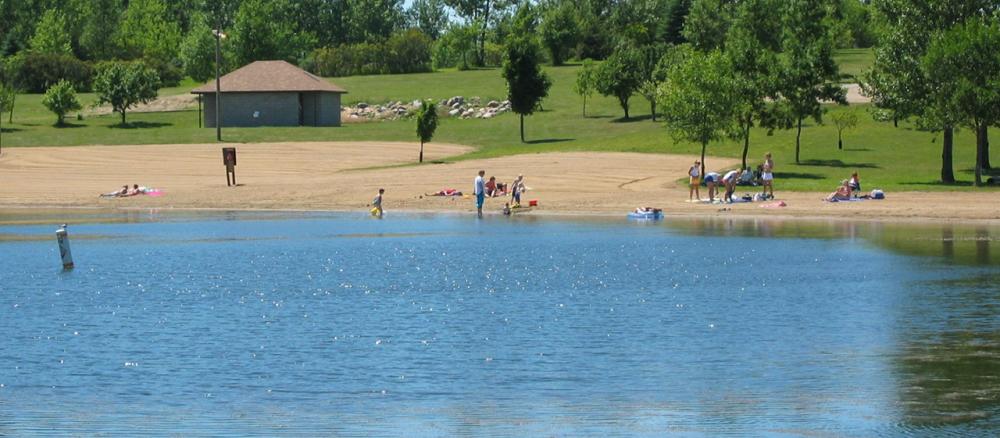Located downhill from Buffalo Ridge, the city of Canby (pop. 1,605) previously experienced periodic flooding whenever rain and snowmelt overwhelmed Canby Creek. Today, the creek flows into man-made, 156-acre Del Clark Lake, which features a park, campground, and swimming beach.
On July 26, 1963, a severe rainstorm dumped more than five inches in the area. After a 600-foot drop from its source on Buffalo Ridge, Canby Creek flooded through Canby causing major damage and injury. The town suffers flood damage every five years on average.
After the 1963 flood, a local committee formed to address the issue. In 1972, the project was turned over to the Lac qui Parle-Yellow Bank Watershed District. Working with farmers and landowners, the Yellow Medicine and Lac qui Parle soil and water conservation districts led the installation of water control projects upstream, including grassed waterways, grade stabilization structures, crop residue management, contour farming, strip-cropping, terraces, field windbreaks, and pasture.
Then in the early 1980s, the lake was formed with a long, earthen bulwark stretched across Canby Creek valley. In 1986, the project received the “Seven Wonders of Engineering Award.”
Today Del Clark Lake hosts Stone Hill Park with a campground, swimming beach, and quality fishery. Eight to ten thousand vehicles pass through the gates every year. A controlled outlet prevents downstream flooding and maintains the lake at a 13-foot average and 30-foot maximum depth.
Recent MPCA monitoring of water quality in the Lac qui Parle River Watershed shows that Del Clark lake meets standards for aquatic recreation, which is not the norm for waters in western Minnesota or even the rest of the watershed. The majority of monitored stream sections and lakes in the Lac qui Parle River Watershed are not meeting water quality standards designed to support recreation and aquatic wildlife.
According to the MPCA’s watershed restoration and protection strategy (WRAPS) report, “maintaining water quality within Del Clark Lake should be a priority as it is the only assessed waterbody in the watershed that meets aquatic recreation standards. Protection efforts will be vital to ensure future water quality in the lake will continue to support healthy swimming and boating opportunities.”
“This summer the Lac qui Parle Watershed District will use a Clean Water Fund grant to install three control structures in upstream tributaries of Del Clark Lake to do just this,” says Trudy Hastad, district administrator.
Learn more on the Lac qui Parle Watershed page.
